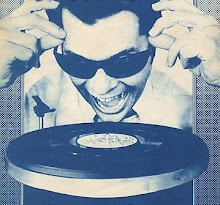 For the first time we could listen to an eclectic mix of blues, rock, folk and jazz all within the same program. And in stereo, no less. Within six months the X was broadcasting similar programming for most of each day. For this listener, there was never any looking back at the limited, uneven, preformatted AM station offerings we had had to endure up to that point. (Remember the Zombies being followed by Percy Faith?)
For the first time we could listen to an eclectic mix of blues, rock, folk and jazz all within the same program. And in stereo, no less. Within six months the X was broadcasting similar programming for most of each day. For this listener, there was never any looking back at the limited, uneven, preformatted AM station offerings we had had to endure up to that point. (Remember the Zombies being followed by Percy Faith?)As an impressionable 15-year-old music hound, I would frequently call and have lengthy conversations with the DJs while ostensibly doing homework. John Small, who soon moved over to WKNR-FM, was always very welcoming. Then ABX added Dave Dixon to its staff; he would go on to become the esteemed leader of the legendary "Air Aces."
Dixon had a “golden ear,” introducing attentive listeners to cross-cultural music on a world scale. Only on his show could one be exposed to such gems as Paul Horn’s Inside the Taj Mahal, Gandharva from Beaver & Krause, Richard Harris singing MacArthur Park and Harry Nilsson’s The Point (a complete LP side). In between, he might have mixed in a cut from John Mayall’s Blues From Laurel Canyon, some Savoy Brown (with original vocalist Chris Youlden), Cat Mother & the All-Night Newsboys and a track from Tim Buckley’s Happy Sad release. Toss in some Brian Auger Trinity (featuring Julie Driscoll on vocals) and Laura Nyro singing Eli's Coming for good measure. Not to be overlooked, Detroit artists such as Frost (Dick Wagner), the Amboy Dukes (Ted Nugent), SRC and the Stooges (Iggy Pop) would also be integrated into the mix.
Continued...
Often Dixon wouldn’t play an entire track. Instead he would seamlessly blend portions of disparate genres into a cohesive audio excursion that might last an hour, interrupted only for a FCC-mandated station ID break. His instrument was comprised of matching turntables, a mixing console and a headphone set.
During his career Dixon was fired from more than one station, being labeled as gruff and argumentative. While that very well may be true, to this listener—and frequent caller—he always had time to talk about music, share what he knew, and be an encourager. This was perhaps most important, for I had started on a voyage of musical discovery long before Dave Dixon and WABX, and wondered why others didn’t seem to find music as important to their daily existence. Instead of snuffing out that desire, his unique ability as audio interpreter, alchemist and promoter fortified my quest to be ever on the alert for recordings of interest.I miss the days when I was INFORMED [about] new
music… even the music I didn't like I grew to appreciate
for its uniqueness. It was truly an education back
then… How will [this generation] expand [its musical]
horizons?? Surely not from corporate radio stations.Smogboy, from At Detroit forum, 12/10/06
Today the closest one can get to freeform programming in this style rests with college radio stations having limited range, unless they're also streaming on the Internet such as WNMC in Traverse City, Michigan. While it doesn't quite match Dixon's artistry, the Internet's Radio Paradise does a credible job of filling the void left by the demise of freeform terrestial radio. (Albeit Dixon's shows were sometimes extraterrestial.)
 Dixon left ABX in 1974. After 10 years in the Miami/Ft. Lauderdale market, he returned to Detroit, where for several years he played the same type of unique music mix on public station WDET as he had during those heady days of the “Air Aces.”
Dixon left ABX in 1974. After 10 years in the Miami/Ft. Lauderdale market, he returned to Detroit, where for several years he played the same type of unique music mix on public station WDET as he had during those heady days of the “Air Aces.” Listen to a 1990 Dave Dixon aircheck while he was on WDET:
After a few years doing a talk show on WXYT in Detroit, Dixon died at home in May of 1999 at age 60. His legacy is that of programming shows in the way that a painter chooses colors and textures, painstakenly and deliberately applying them on an aural canvas to provide much more than a fleeting impression.



